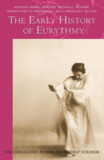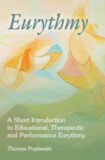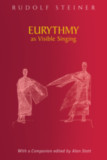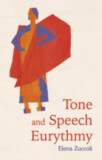An Introduction to Eurythmy
(CW 277a)
- Publisher
SteinerBooks - Published
1st December 1983 - ISBN 9780880100427
- Language English
- Pages 108 pp.
- Size 5.5" x 8.5"
16 talks preceding eurythmy performances (CW 277 / 277a)
The art of eurythmy strives to make the invisible visible in a harmonious and disciplined play of color, form, sound, and motion. During the early years of the twentieth century when eurythmy was young and little known, Rudolf Steiner's introductory talks prepared nearly 300 audiences for their encounters with this wholly new way of presenting drama, poetry, and music through human movement. Full of life and creativity, these talks illuminate the richness underlying the spiritual laws of this new art form.
Sixteen of Steiner's talks on eurythmy are presented here as an introduction to the aesthetic, pedagogical, and therapeutic secrets of this developing art.
This volume contains translations of 1st lecture in Die Entstehung und Entwickelung der Eurythmie (GA 277a); and 15 lectures in Eurythmie als Impuls für künstlerisches Betätigen und Betrachten (current edition: Eurythmie. Die Offenbarung der sprechenden Seele, GA 277).
Rudolf Steiner
Rudolf Steiner (b. Rudolf Joseph Lorenz Steiner, 1861–1925) was born in the small village of Kraljevec, Austro-Hungarian Empire (now in Croatia), where he grew up. As a young man, he lived in Weimar and Berlin, where he became a well-published scientific, literary, and philosophical scholar, known especially for his work with Goethe’s scientific writings. Steiner termed his spiritual philosophy anthroposophy, meaning “wisdom of the human being.” As an exceptionally developed seer, he based his work on direct knowledge and perception of spiritual dimensions. He initiated a modern, universal “spiritual science” that is accessible to anyone willing to exercise clear and unbiased thinking. From his spiritual investigations, Steiner provided suggestions for the renewal of numerous activities, including education (general and for special needs), agriculture, medicine, economics, architecture, science, philosophy, Christianity, and the arts. There are currently thousands of schools, clinics, farms, and initiatives in other fields that involve practical work based on the principles Steiner developed. His many published works feature his research into the spiritual nature of human beings, the evolution of the world and humanity, and methods for personal development. He wrote some thirty books and delivered more than six thousand lectures throughout much of Europe. In 1924, Steiner founded the General Anthroposophical Society, which today has branches around the world.







